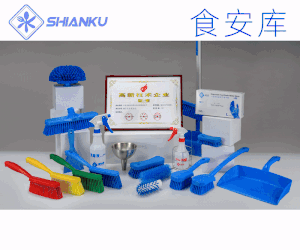食品伙伴網(wǎng)訊 據(jù)歐盟食品安全局(EFSA)消息,8月20日,歐盟食品安全局發(fā)布關(guān)于授權(quán)轉(zhuǎn)基因植物申請背景下新表達蛋白水平測定的解釋性說明。
轉(zhuǎn)基因生物在進入歐洲市場之前要經(jīng)過風險評估和監(jiān)管批準。根據(jù)立法(指令2001/18/EC、條例( EC )第1829/2003號和條例( EU )第503/2013號)以及EFSA關(guān)于轉(zhuǎn)基因植物食品和飼料風險評估和轉(zhuǎn)基因植物環(huán)境風險評估的指導文件,申請人需要對插入轉(zhuǎn)基因植物基因組中的任何DNA序列進行分子鑒定。本解釋性說明提供了確定新表達蛋白質(zhì)水平的關(guān)鍵方法方面的細節(jié),申請人應該考慮和報告這些內(nèi)容,以便協(xié)調(diào)提交給EFSA的轉(zhuǎn)基因植物申請中的信息。
部分原文報道如下:
Genetically modified organisms are subject to a risk assessment and regulatory approval before entering the European market. According to legislation (Directive 2001/18/EC, Regulation (EC) No 1829/2003 and Regulation (EU) No 503/2013) and the EFSA guidance documents on the risk assessment of food and feed from genetically modified (GM) plants and on the environmental risk assessment of GM plants, applicants need to perform a molecular characterisation of any DNA sequence inserted in the GM plant genome. When a GM plant is designed to produce one or more newly expressed proteins, an aspect of the risk assessment process is to characterise these proteins and to reliably determine their levels in the GM plant tissues. A number of methods to measure protein expression levels are used and several experimental factors within these methods are of critical importance in order to obtain reliable results. This explanatory note provides details on key methodological aspects for the determination of newly expressed protein levels that should be considered and reported by applicants in order to harmonise the information in GM plant applications submitted to EFSA.
本文由食品伙伴網(wǎng)食品資訊中心編輯,供網(wǎng)友參考,歡迎轉(zhuǎn)載,轉(zhuǎn)載請注明出處!有任何疑問,請聯(lián)系news@foodmate.net。
相關(guān)政策解讀











 地區(qū):
地區(qū):






 魯公網(wǎng)安備 37060202000128號
魯公網(wǎng)安備 37060202000128號



